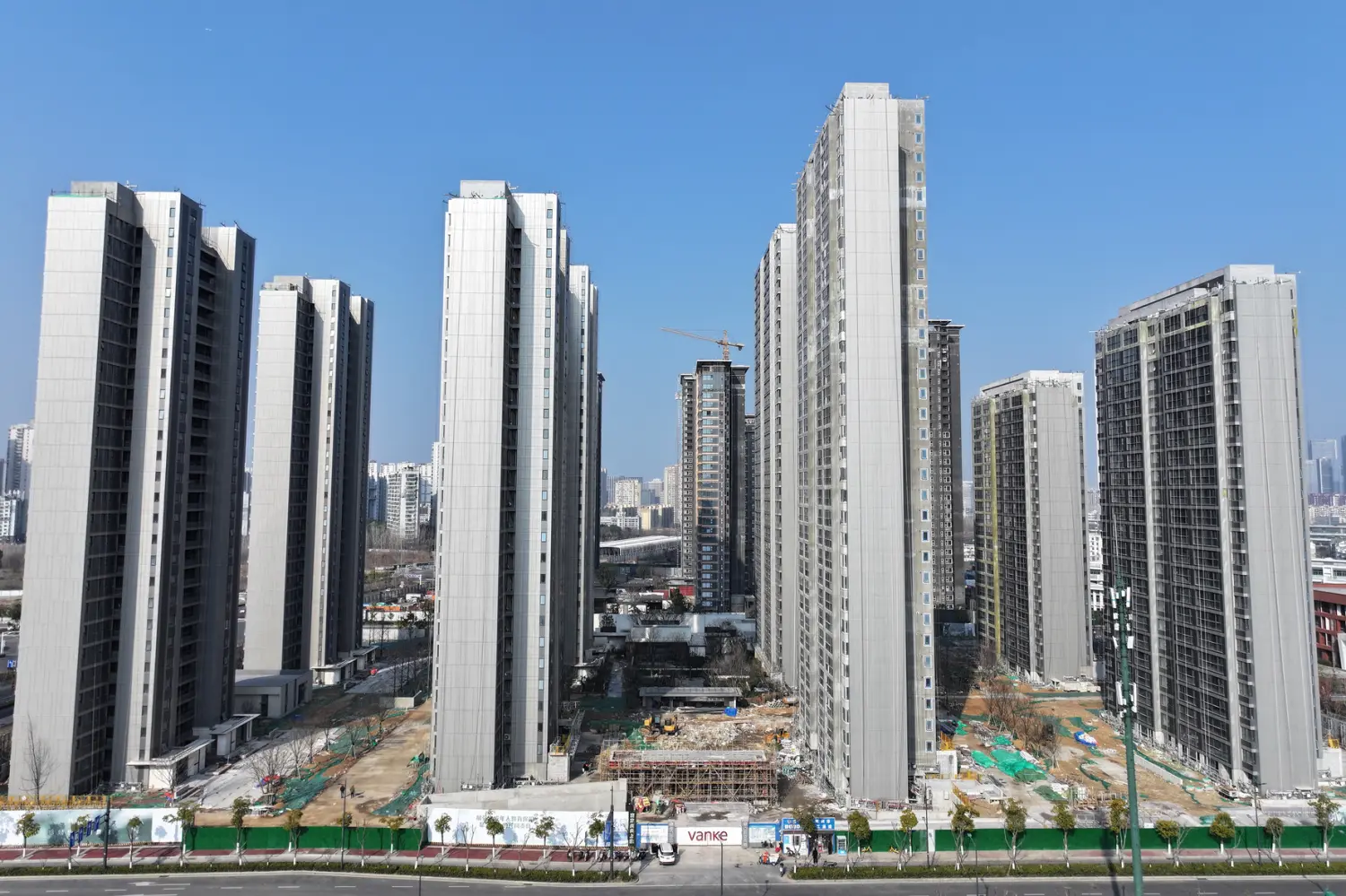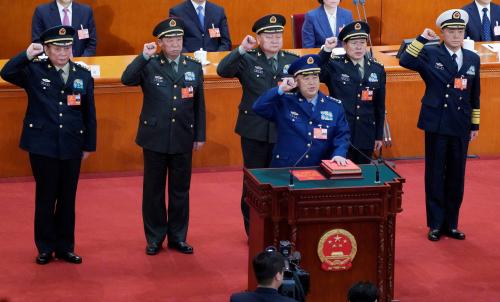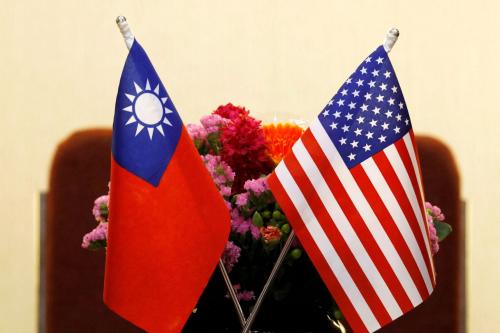Executive summary
For much of President Xi Jinping’s third term, he and his coterie of advisors have struggled to cope with the three “Ds” afflicting China’s economy: debt, deflation, and demography. The shift toward a focus on consumption seems to have been reluctant and reactive, raising real questions as to why Xi—otherwise known for his willingness to take risks and be proactive—has chosen this course. In his third term, Xi seems to have reallocated his risk portfolio to focus on the domestic economy, taking a calculated risk that doubling down on high technology while eschewing a bailout for the real estate sector will ultimately put China’s economy on a stronger footing over the long term. Xi likely believes in his techno-industrial vision for China’s economy and that China will emerge from this economic transformation in a stronger position despite the current pain. Observers should not focus on how much the People’s Republic of China national government spends in the coming year, but rather on how it disburses those funds. To fix China’s economic problems, the government would have to address not just consumption but the twin problems of the collapse of China’s real estate market and the localities’ continued reliance on debt as they remain starved of sustainable sources of revenue. Despite China’s daunting economic challenges, China likely has the wherewithal and capacity to weather the pain of a second trade war—and the United States may have less leverage than the problems in China’s real estate sector might lead Trump to believe.
Xi, China’s economy, and the three “Ds”
For much of President Xi Jinping’s third term, he and his coterie of advisors have struggled to cope with the three “Ds” afflicting China’s economy: debt, deflation, and demography. The prevailing diagnosis of China’s economic malaise tends toward the same prescription—namely, an expansive fiscal stimulus designed to enhance consumption as a driver of GDP growth and alleviate the pain caused by the collapse of China’s real estate sector.
Yet, Xi’s policies thus far have been criticized for being too austere and doing too little—and sometimes too late—to stimulate China’s sagging economic numbers. It is worth asking why Xi has been reluctant to change course. This month’s National People’s Congress (NPC) marks the halfway point in Xi’s third five-year term as general secretary, which began in October 2022, and is, therefore, a natural point at which to answer this question, particularly as the second trade war with the United States intensifies.
Prologue to the problem
Throughout Xi’s third term, many analysts of China’s economy seem to have gone through a boom-and-bust cycle of inflated and then disappointed expectations. The story starts with China’s abrupt exit from its “zero-COVID” policy in late 2022—just after Xi started his third term as general secretary. Following that dramatic policy shift, many observers—especially in the business community—wrongly assessed that China’s economic trajectory would follow a roughly V-shaped trajectory similar to the United States and other Western economies as they recovered from the pandemic. These analysts believed that the initial rollback of the pandemic control measures would lead to a short-term spike in disease and death, but that then China’s economy would come roaring back—perhaps abetted by government stimulus.
These expectations at the time were unfounded and failed to appreciate the ways in which the pandemic, and the “zero-COVID” policies in particular, compounded the structural problems afflicting China’s economy. For example, the “zero-COVID” policies left many struggling localities that already had financial difficulties before the pandemic even worse off, leaving little room for stimulus at the local level. Moreover, China’s economy had been open internally for much of the pandemic, which blunted the post-pandemic “revenge spending” that drove other economies’ recoveries. When the economic recovery that some analysts anticipated failed to materialize, many of these same observers lunged in the other direction and became very pessimistic about China’s economic outlook.
Xi’s corrective: Stabilization
Over the past year, the pendulum has oscillated with increasing frequency between hope and despair—with many Western observers becoming overly excited about the prospect of greater economic stimulus following last year’s plenum meeting on the economy—and thereby setting themselves up yet again to be disappointed. Indeed, it seems like the Chinese Community Party is unlikely to significantly depart from the path set out at the third plenum earlier this year. Despite some observers’ expectations that Xi and his team would finally fire off a “bazooka” stimulus package, they have tended to choose stabilization over stimulus.
We have seen this movie replayed several times since Xi convened a much-delayed third plenum of the Central Committee in July 2024—followed by an unusual September Politburo meeting focused on economic policy. The Central Committee plenum meeting was significant, but not because it unveiled any new policies—it actually did not. Instead, it was significant because, in China’s party-state system, the Central Committee is nominally the most authoritative body in China—and therefore any ensuing economic policies were unlikely to go beyond the parameters laid out by the Central Committee during that plenum.
After the third plenum, the government’s stimulus measures seemed primarily designed to stabilize the economy. Notably, the readout of the December Central Economic Work Conference did discuss the need to “stimulate consumption,” but emphasized efforts to “stabilize” the economy. Indeed, if one reads the documents from the July plenum, the September Politburo meeting, and the December Central Economic Work Conference side-by-side, one will find they are remarkably—but perhaps not surprisingly—consistent. As such, the economic policies rolled out at every subsequent party or state meeting have been modest at best and dispiriting at worst. Xi and his team have done enough to prevent a nosedive, with key indicators like inflation hovering just above deflation territory in recent months.
China’s pronouncements during the recently concluded NPC have again roused expectations. The Government Work Report elevated “vigorously boosting consumption” to the government’s top priority, and the government subsequently rolled out an eight-point “Special Action Plan for Boosting Consumption.” Moreover, many of the particulars—such as how cash-strapped localities will pay for these new stimulus programs—remain unclear. For example, the special action plan calls for “research” on establishing a child care subsidy plan, which could bolster consumption depending on the size of the subsidy, but the focus on “research” suggests this will not be an immediate remedy.
What is driving Xi’s decisionmaking on the economy?
The shift toward a focus on consumption seems to have been reluctant and reactive, raising real questions as to why Xi—otherwise known for his willingness to take risks and be proactive—has chosen this course. Xi likely believes in his techno-industrial vision for China’s economy and that China will emerge from this economic transformation in a stronger position despite the current pain. The juxtaposition of headlines in late January, for example, somewhat encapsulated Xi’s approach to the economy: while Chinese AI company DeepSeek unexpectedly prompted a major tech stock sell-off on Wall Street, Chinese real estate company Vanke announced a $6.2 billion loss in 2024, calling into doubt its ability to service its debts. Xi almost certainly did not welcome the news about Vanke, but the mounting problems in the real estate sector have only led Xi’s administration to take steps to “stabilize” rather than resolve the situation. Xi likely views the problem through an ideological lens—viewing the real estate sector as speculative, unproductive, and an extension of what Vladimir Lenin would have called “finance capitalism.” Xi may also judge that bailing out the real estate sector would create a moral hazard problem—providing an incentive for real estate firms to replicate the problems—and that a sectoral correction is long overdue. Throughout his tenure, the previous Chinese premier, Li Keqiang, talked about letting the real estate “bubble” contract, but his efforts were fitful and hapless.
It is also worth remembering that Xi became China’s heir apparent in 2007—just before the global financial crisis. At the time, China earned plaudits for its expansive stimulus package, which allowed it to weather the crisis better than other major economies. But Xi is also probably attuned to the ensuing criticism that China’s stimulus merely exacerbated China’s existing economic problems and kicked the proverbial can down the road. If Xi resorted to this familiar playbook, he would be similarly criticized by Western economists without solving China’s underlying problems. Xi may well judge that economists will criticize him regardless of whether he chooses stimulus or austerity. Thus, he seems content to advance the policies that further his own economic vision.
Finally, in his third term, Xi seems to have reallocated his risk portfolio to focus on the domestic economy, taking a calculated risk that doubling down on high technology while eschewing a bailout for the real estate sector will ultimately put China’s economy on a stronger footing over the long term—despite the malaise in the meantime. Xi in his third term likely judges that he is politically unassailable, a marked departure from his predecessors, who seemed to reflexively resort to whatever measures necessary to prop up economic growth. Indeed, at the last Party Congress in 2022, Xi stacked the Politburo Standing Committee and the economic leadership with former aides he has known for decades. At this point in Xi’s tenure, who would have the temerity to question his economic policies?
Course correction?
Nonetheless, Xi and his team have corrected course over the past year—most notably during the September 2024 Politburo meeting that emphasized measures to stabilize the economy. The impetus for this adjustment, however, likely reflected Xi’s focus on maintaining party discipline and control and not just his concern about the mounting bad news in the economic data. Notably, the September 2024 Politburo meeting on the economy occurred alongside stories about struggling localities that were unable to pay local officials—a problem that could damage party control if unaddressed, and one that seems more likely to animate Xi than just the poor economic data by itself, which had not prompted a shift from Xi ahead of the third plenum just a few months earlier. Even in that instance, Xi’s response was revealing: rather than devoting more resources to the localities, Xi and his colleagues approved a debt swap, which in effect shuffled money around and allowed localities to take on even more debt.
Since the September Politburo meeting, Xi has sought to overtly recognize the vital role that China’s private sector will play in realizing his techno-industrial vision for the economy, especially following DeepSeek’s coup. Yet Xi’s overtures to the titans of China’s tech sector—and the concomitant rehabilitation of Jack Ma—seem to have been intended to align the private sector’s priorities with his own rather than mark a dramatic policy shift. As the late party elder Chen Yun was known to say, the private sector is like “a bird in a cage”—and Xi wants to keep it there. Moreover, it is worth noting that Xi’s meeting with the tech titans helped animate China’s “animal spirits” by adding fuel to a stock market rally without costing him a single yuan.
Finally, Xi’s government at the March NPC moved further toward rolling out new measures to stimulate consumption, although these efforts may still be inadequate to remedy the problem. Indeed, as long as Xi remains reluctant to devote more considerable resources to bailing out the real estate sector, it will remain challenging to bolster consumption to the level that might pull China’s economy out of the doldrums.
Nonetheless, the confluence of these actions—unveiling a program to stimulate consumption and acknowledging the private sector’s role in advancing Xi’s vision—have again prompted some to feel optimistic about China’s economy. Yet observers should not focus on how much the People’s Republic of China (PRC) national government spends in the coming year, but rather on how it disburses those funds. Amid the flurry of documents and press conferences, the PRC leadership introduced some new ways to aid consumers—instead of producers and infrastructure projects, the traditional recipients of PRC stimulus funds—but these programs’ scale and adequacy remain to be seen.
Moreover, the primary mechanism for getting those funds to consumers would be through local governments, which are responsible for paying for the central governments’ unfunded mandates to spend more on welfare—which would, in fact, drive greater consumption. However, many localities remain cash-strapped as the fallout from the real estate crisis has crippled their finances, and the central government provided them scant relief at the NPC.
To fix the problem, the government would have to address not just consumption, but the twin problems of the collapse of China’s real estate market and the localities’ continued reliance on debt as they remain starved of sustainable sources of revenue.
What options does Xi have?
Xi seems unlikely to change course significantly on economic policy barring a major shock—such as a major escalation of the trade war, beyond what Beijing already has forecasted, which accounts for President Donald Trump’s threat to increase tariffs as high as 60%. Beijing has three major levers it can pull to cope with the fallout from the trade war: fiscal policy, foreign exchange policy, and monetary policy.
- Monetary policy. So far, the leadership’s go-to lever has been monetary policy, with the People’s Bank of China cutting the reserve ratio and reducing interest rates twice last year and even going so far as changing its mission. Yet these measures have only had a marginal impact and have been inadequate to revitalize China’s economy.
- Foreign exchange policy. Some have suggested that as the trade war intensifies, China might allow its currency to depreciate. While this would appear to be a sensible option for offsetting the effect of Trump’s tariffs, all the evidence in the last few months suggests the opposite—that China is in fact taking great pains to prop up the value of the renminbi. Two considerations may be driving this approach: first, devaluation could further undermine domestic confidence, and second, devaluation could incite more pressure from Trump, who has previously stated that China is suppressing the value of its currency. China may also be propping the currency up only to let it depreciate gradually in the coming year, but so far, the policies of the last few months suggest it will be reluctant to resort to a change in currency policy to deal with the trade war.
- Fiscal policy. Xi may be saving more stimulus for a second trade war with the United States, as seems to have become conventional wisdom at this point. Yet some astute observers have pointed out that the wiser course would have been to stimulate the economy ahead of a second trade war, arguing this would have reinforced China’s ability to weather the Trump administration’s tariffs. Moreover, the notion that Xi is “keeping his powder dry” does not seem to be a primary factor driving Beijing’s economic policy thus far. Indeed, one Chinese economist, Li Daokui has publicly argued that U.S. tariffs do not even rank among the top three problems afflicting China’s economy, though this may also be a bit of bravado. Notably, so far, the two rounds of tariffs imposed by the Trump administration on China have provoked more “offense” from Beijing in the form of limited retaliation, rather than new defensive measures primarily designed to offset the impact of the Trump administration’s tariffs.
Built to last
Despite China’s daunting economic challenges, the crucial point for the Trump administration is that despite China’s economic woes, China likely has the wherewithal and capacity to weather the pain of a second trade war—and that the United States may have less leverage than the problems in China’s real estate sector might lead Trump to believe. Xi may be reluctant to pull the levers mentioned above, and there are risks to pulling any of them, but they are nonetheless available to him. Moreover, the robustness of China’s “new” economy—the high-tech and manufacturing sectors at the heart of Xi’s vision—means that China is well-positioned to remain a formidable competitor to the United States, even in the face of these economic doldrums. Indeed, one could almost consider the combination of economic malaise and resilience the hallmark of being a great power. After all, since the stagflation and retrenchment of the 1970s, American commentators have prematurely prognosticated U.S. decline—only for its resilience to prove enduring.
-
Acknowledgements and disclosures
The author would like to thank Allie Matthias for her research assistance and Gerard DiPippo for his incisive comments and feedback.
The Brookings Institution is committed to quality, independence, and impact.
We are supported by a diverse array of funders. In line with our values and policies, each Brookings publication represents the sole views of its author(s).







